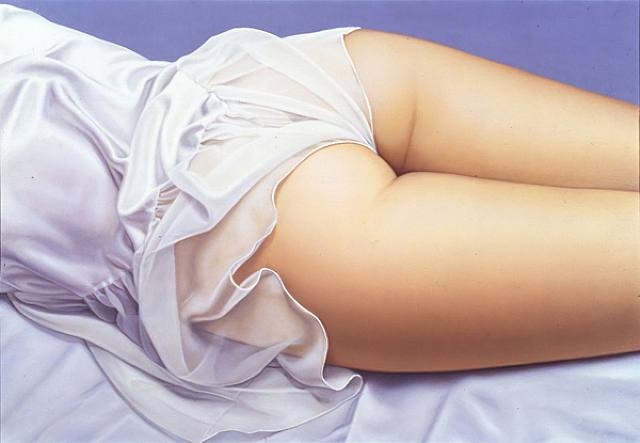The first retrospective of Edward Hopper in Paris is also one of the most ambitious ever, a look at the artist “in all his complexity” as a painter of light and architecture as well as the loneliness of modern life.
The first retrospective of Edward Hopper in Paris is also one of the most ambitious ever, a look at the artist “in all his complexity” as a painter of light and architecture as well as the loneliness of modern life.
A mysterious veil of gold and glass now floats permanently over a courtyard in the Louvre. Beneath it are priceless works of Islamic art, many of them now revealed for the first time to the public gaze. The Louvre’s Islamic collection is one of the world’s richest, with pieces created over 13 centuries on three continents.

American painter John Kacere began his career as an abstract artist, inspired by the likes of Joan Miró and Paul Klee. In mid-life, in 1963, he became a completely different artist, not just figurative but hyper-real. He began painting women with such technical skill and in such painstaking detail that it simply looks like photography – but only beautiful women and only their crotches, thighs and butts. He kept at it for over 30 years, until his death in 1999.

A June Newton retrospective sheds light on the career of this gifted photographer
By Brent Gregston

Kristin Baker fills larger-than-life works with exploding shards of light and color
Between the pyramids (145 meters) and the Eiffel Tower (325 meters), mankind’s highest structures were Gothic cathedrals. The tallest were built in France, as cities like Amiens, Chartres, Paris and Rouen sought to outdo each other.
The cathedral of Beauvais, dedicated to St. Peter, was the world record holder. It took the prize with a vault of 48 meters and, eventually, a 152-meter tower. But one of the most daring feats in the history of architecture turned out to be a stone house of cards. Part of the vault collapsed and had to be resurrected. The tower, completed in 1567, came tumbling down six years later.
The Palais de Tokyo in Paris has reopened to the public with a vast triennial exhibition of contemporary art and the ambition to be an “anti-museum.” More than an art space, the new Palais is a vortex dug deep into the haut heart of right bank Paris. Without warning, it funnels the visitor deep underground all the way to Avenue President Wilson on the river Seine. Inside it is unplastered and unpainted, half concrete cathedral, half construction site.
“I want paint to work as flesh,” said Lucian Freud, grandson of Sigmund. His fleshy masterpieces made him the world’s most famous portrait artist.